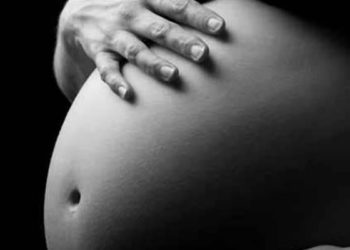Cerclage outcomes similar in singleton and twin pregnancies
Image: PD
1. The frequency of delivery before 28 weeks was similar between singleton and twin gestations.
2. Greater cervical dilation, prolapsing membranes and short cervical length were risk factors for delivery before 28 weeks.
Evidence Rating Level: 2 (Good)
Study Rundown: This study found that physical exam-indicated cerclage in the 2nd trimester yields similar obstetric outcomes in singleton and twin gestations. Prior studies have demonstrated that cerclage can be useful in prolonging singleton pregnancies but little data exists to support use in twin gestations. Finding of the present work suggest that physical exam-indicated cerclages have similar efficacy in twin as compared to singleton gestations.
Limitations include retrospective design and lack of a control group, permitting comparisons only between cerclage pregnancies. Prospective investigation is warranted to determine whether cerclage yields superior outcomes relative to expectant management in twin gestations.
Click to read the study in AJOG
Relevant Reading: Cervical cerclage for prevention of preterm delivery in woman with short cervix: randomized controlled trial
Study author, Dr. Emily Miller, MD MPH, Department of Obstetrics and Gynecology, Division of Maternal-Fetal Medicine at Northwestern Memorial Hospital talks to 2 Minute Medicine:
“While women with twins are more likely to experience cervical insufficiency compared to women with singletons, there is little evidence to guide the management of this condition in women with a multiple gestation. We compared outcomes of an exam-indicated cerclage in twins to that in singletons and found that rates of extreme prematurity (i.e., delivery before 28 or 32 weeks) did not differ between the two groups. While a randomized trial is needed to truly demonstrate efficacy, these data support the use of an exam-indicated cerclage in properly selected candidates with a twin pregnancy.”
In-Depth [retrospective cohort study]: This study compared obstetric outcomes of women with singleton (n=338) and twin (n=104) pregnancies following physical-exam indicated cerclage between 16 and 24 weeks gestational age. Outcomes evaluated include gestational age at delivery, latency post-cerclage and other complications such as PPROM, chorioamnionitis and NICU admission.
Delivery prior to 28 and 32 weeks did not significantly differ between singleton and twin gestations. Advanced cervical dilation (OR 1.42, CI 1.10-1.84) and membrane prolapse into (OR 2.59, CI 1.48-4.52) or beyond (OR 5.71, CI 2.76-11.79) the cervical canal were associated with increased odds of preterm birth prior to 28 weeks; later gestational age at cerclage placement was protective (OR 0.89, CI 0.81-0.99). Twin gestation was not associated with higher odds of preterm delivery prior to 28 weeks, though digital cervical length <2cm in twin gestations was associated with delivery before 28 weeks (OR 4.44, CI 1.30-15.14).
More from this author: New sepsis scoring system aids in predicting morbidity in obstetric patients, Induction after 40 weeks in women with gestational diabetes associated with Cesarean delivery, Potential overuse of routine postpartum CBC, Poor fetal growth in overweight & obese with insufficient weight gain, Elective induction may increase risk of C-section in obese women
©2012-2014 2minutemedicine.com. All rights reserved. No works may be reproduced without expressed written consent from 2minutemedicine.com. Disclaimer: We present factual information directly from peer reviewed medical journals. No post should be construed as medical advice and is not intended as such by the authors, editors, staff or by 2minutemedicine.com. PLEASE SEE A HEALTHCARE PROVIDER IN YOUR AREA IF YOU SEEK MEDICAL ADVICE OF ANY SORT.





